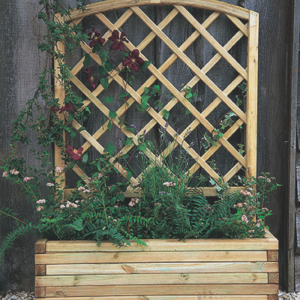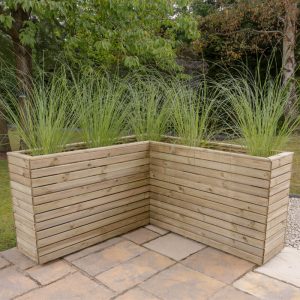Presenting the stylish Linear Long Hartwood Planter, perfect for showcasing an array of ornamental bushes like boxwoods, standard trees, and petite conifers. It radiates elegance when adorned with blooming flora. Select from the diverse Linear series to find a planter – or multiple ones – that match the size and aesthetic of your garden; choices include square, double, long, and tall designs. The planters boast a contemporary aesthetic, characterized by bold horizontal strokes and a natural wooden hue, guaranteed to infuse charm and definition into any outdoor space.
Position this Linear Long Planter beneath a window for a subtle pop of color. Crafted with precision, the timber used is finely planed and treated with a protective coat to ward off decay. Elevated by treated slats, the planter includes a breathable lining that retains soil and moisture for optimal plant growth. Shipped in a convenient flat pack for effortless self-assembly. When cultivating edible crops, it is advisable to line the bed/planter with a membrane before introducing soil.















































